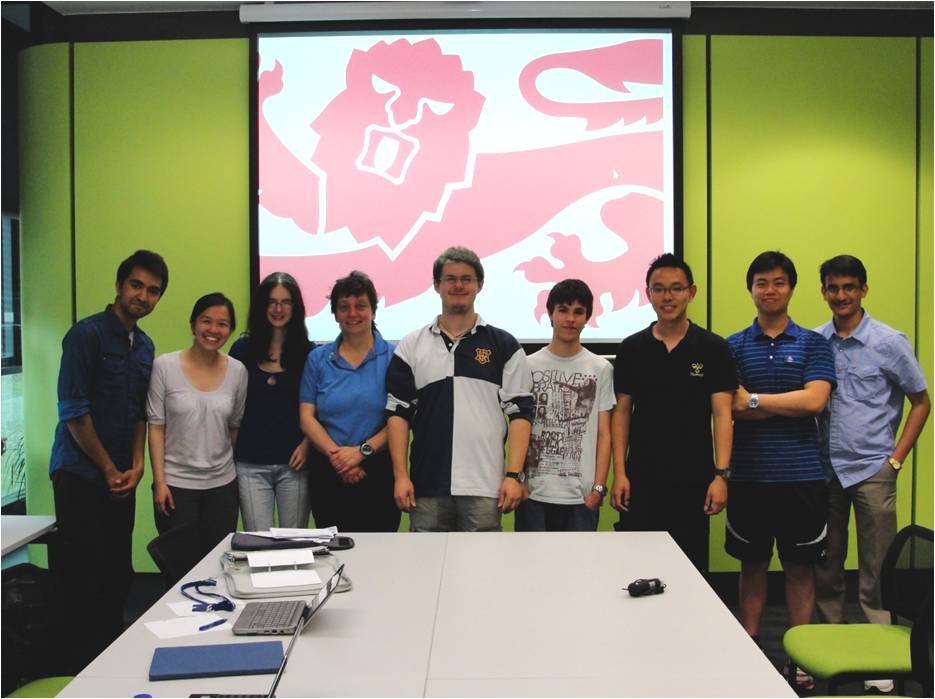Team:Newcastle
From 2010.igem.org
Swoodhouse (Talk | contribs) |
Swoodhouse (Talk | contribs) |
||
| Line 8: | Line 8: | ||
<span style="color:#006400">'''Project description:'''</span> | <span style="color:#006400">'''Project description:'''</span> | ||
| - | [[problem|Microcracks in concrete]] undermine structural integrity and are inaccessible to conventional repair methods. ''Bacillus'' species could be the ideal candidates for concrete repairing since they are able to precipitate CaCO<sub>3</sub> (Use of bacteria to repair cracks in concrete, Tittelboom et al, cement and concrete research (2009)). | + | [[Team:Newcastle/problem|Microcracks in concrete]] undermine structural integrity and are inaccessible to conventional repair methods. ''Bacillus'' species could be the ideal candidates for concrete repairing since they are able to precipitate CaCO<sub>3</sub> (Use of bacteria to repair cracks in concrete, Tittelboom et al, cement and concrete research (2009)). |
'''Our project''' aims to fill cracks in concrete with a mixture of [https://2010.igem.org/Team:Newcastle/Urease| CaCO<sub>3</sub>] , which has the same expansion coefficient as concrete, [https://2010.igem.org/Team:Newcastle/glue| Glue], which is required to gel together the CaCO3 crystals and [https://2010.igem.org/Team:Newcastle/Filamentous_Cells| filamentous ''Bacillus subtilis'' cells], which will act as reinforcements like steel rods in concrete. To protect the environment our project will also include a design for a [https://2010.igem.org/Team:Newcastle/Non-target-environment_kill_switch| kill switch]. To coordinate the cells(glue production or forming filaments)once they have reached the bottom of the crack, for which Bacillus subtilis 168 required [https://2010.igem.org/Team:Newcastle/Swarming| swarming] genes to be introduced from strain 3610 to swim, we will be using [https://2010.igem.org/Team:Newcastle/End_of_crack_%26_signalling_system| quorum sensing] using the subtilin system previously used by [https://2008.igem.org/Team:Newcastle_University/ProofOfConceptBrick| Newcastle 2008’s iGEM team.] | '''Our project''' aims to fill cracks in concrete with a mixture of [https://2010.igem.org/Team:Newcastle/Urease| CaCO<sub>3</sub>] , which has the same expansion coefficient as concrete, [https://2010.igem.org/Team:Newcastle/glue| Glue], which is required to gel together the CaCO3 crystals and [https://2010.igem.org/Team:Newcastle/Filamentous_Cells| filamentous ''Bacillus subtilis'' cells], which will act as reinforcements like steel rods in concrete. To protect the environment our project will also include a design for a [https://2010.igem.org/Team:Newcastle/Non-target-environment_kill_switch| kill switch]. To coordinate the cells(glue production or forming filaments)once they have reached the bottom of the crack, for which Bacillus subtilis 168 required [https://2010.igem.org/Team:Newcastle/Swarming| swarming] genes to be introduced from strain 3610 to swim, we will be using [https://2010.igem.org/Team:Newcastle/End_of_crack_%26_signalling_system| quorum sensing] using the subtilin system previously used by [https://2008.igem.org/Team:Newcastle_University/ProofOfConceptBrick| Newcastle 2008’s iGEM team.] | ||
Revision as of 12:27, 2 August 2010

| |||||||||||||
| |||||||||||||
Project description:
Microcracks in concrete undermine structural integrity and are inaccessible to conventional repair methods. Bacillus species could be the ideal candidates for concrete repairing since they are able to precipitate CaCO3 (Use of bacteria to repair cracks in concrete, Tittelboom et al, cement and concrete research (2009)).
Our project aims to fill cracks in concrete with a mixture of CaCO3 , which has the same expansion coefficient as concrete, Glue, which is required to gel together the CaCO3 crystals and filamentous Bacillus subtilis cells, which will act as reinforcements like steel rods in concrete. To protect the environment our project will also include a design for a kill switch. To coordinate the cells(glue production or forming filaments)once they have reached the bottom of the crack, for which Bacillus subtilis 168 required swarming genes to be introduced from strain 3610 to swim, we will be using quorum sensing using the subtilin system previously used by Newcastle 2008’s iGEM team.
 
|
 "
"
